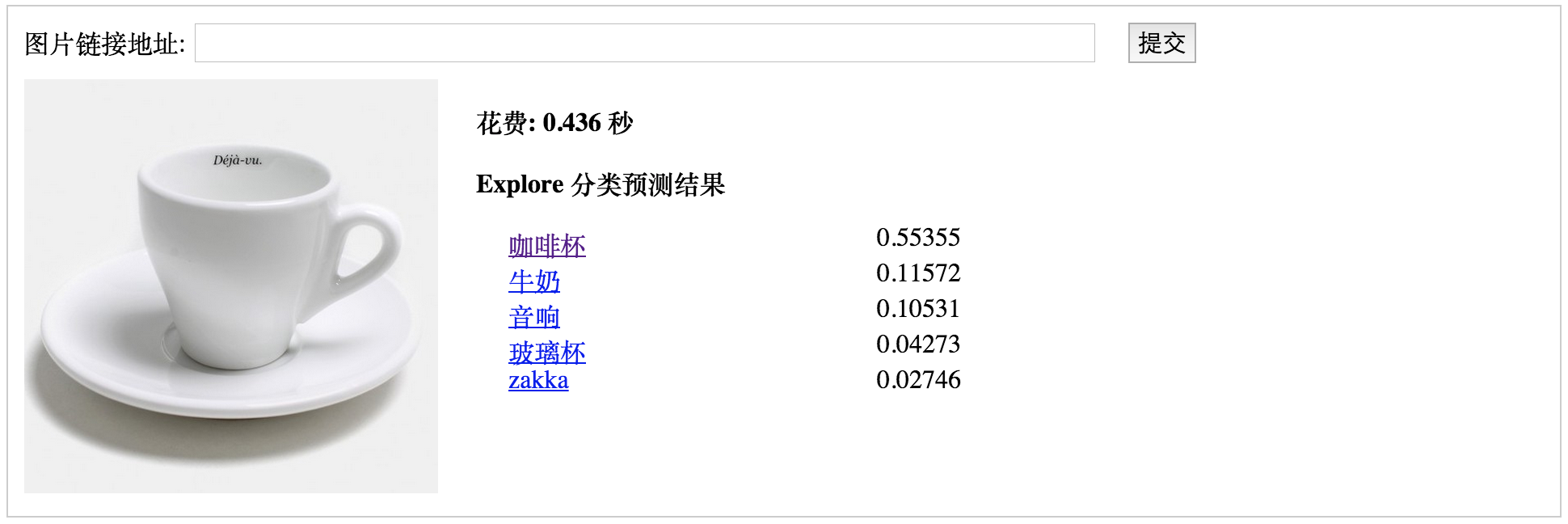caffe 在花瓣的使用
有这么一种场景,我们需要对图片进行标注,比如打 tag 呀,分类呀……
可以用机器来完成吗?答案是可以的。
caffe 是一个深度学习的框架, 它提供了一些 models, 很方便让工程师或研究员重新训练和使用。
经过多次尝试,我们决定使用 CaffeNet 做图片分类的网络。
以花瓣发现为例子吧
首先我们要收集标注数据
# file: explore.txt
日系简约风格家居 explore/rixijianyue
针织 explore/zhenzhi
不织布 explore/buzhibu
蕾丝 explore/leisi
软陶 explore/ruantao
临摹练习 explore/linmolianxi
水彩手绘 explore/shuicaishouhui
萝莉 explore/luoli
混搭 explore/hunda
刺绣 explore/cixiu
萌娃 explore/mengwa
设计配色 explore/shejipeise
...
...# file: get_huaban_images.py
import requests
import os
ROOT_PATH = 'datasets'
LIMIT = 1000
def get_pins(uri):
api = 'http://api.huaban.com/{}'.format(uri)
url = api
count = 0
while True:
rsp = requests.get(url, headers={
'Accept': 'application/json',
'User-Agent': 'Huabot/1.0'})
print(rsp)
pins = rsp.json()['pins']
if len(pins) == 0:
break
min_pin_id = pins[0]['pin_id']
for pin in pins:
if min_pin_id > pin['pin_id']:
min_pin_id = pin['pin_id']
download_pin(uri, pin)
count += 1
url = api + '?limit=100&max=%s'%min_pin_id
if count > LIMIT:
break
def download_pin(path, pin):
dirctory = os.path.join(ROOT_PATH, path)
if not os.path.isdir(dirctory):
os.makedirs(dirctory)
fn = os.path.join(dirctory, str(pin['file_id']) + '.jpg')
print('Download:', fn)
if os.path.isfile(fn):
return
file_url = 'http://img.hb.aicdn.com/' + pin['file']['key'] + '_fw320'
rsp = requests.get(file_url)
data = rsp.content
with open(fn, 'wb') as f:
f.write(data)
explores = [explore.split('\t')
for explore in open('explore.txt', 'r').read().split('\n') if explore]
for explore in explores:
uri = explore[1].strip()
get_pins(uri)然后执行 python get_huaban_images.py 接下来就是漫长的等待中……
准备训练数据和验证数据
我们把前面下载下来的数据分为两类 train.txt 和 val.txt
# file: create_train.py
import glob
import random
filelist = []
VAL_LENGTH = 10000
filelist = glob.glob('datasets/explore/*/*')
random.shuffle(filelist)
# filelist = filelist[:3000]
filelist = [fn.split('/', 2)[2] for fn in filelist]
cats = [fn.split('/', 1)[0] for fn in filelist]
cats = list(set(cats))
test = filelist[-VAL_LENGTH:]
filelist = filelist[:-VAL_LENGTH]
with open('cats.txt', 'w') as f:
f.write('\n'.join(cats))
with open('train.txt', 'w') as f:
for fn in filelist:
cat = fn.split('/', 1)[0]
cat_id = cats.index(cat)
f.write("explore/{} {}\n".format(fn, cat_id))
with open('val.txt', 'w') as f:
for fn in test:
cat = fn.split('/', 1)[0]
cat_id = cats.index(cat)
f.write("explore/{} {}\n".format(fn, cat_id))一样的执行 python create_train.py, 这样就把数据集分成两部分, cats.txt 我们是用来保存分类的信息
将数据写到 lmdb 里面
# file: create_huaban.sh
TOOLS=/path/to/caffe/build/tools
TRAIN_DATA_ROOT=datasets/
VAL_DATA_ROOT=datasets/
RESIZE_HEIGHT=256
RESIZE_WIDTH=256
$TOOLS/convert_imageset \
--resize_height=$RESIZE_HEIGHT \
--resize_width=$RESIZE_WIDTH \
--shuffle \
$TRAIN_DATA_ROOT \
train.txt \
huaban_train_lmdb
$TOOLS/convert_imageset \
--resize_height=$RESIZE_HEIGHT \
--resize_width=$RESIZE_WIDTH \
--shuffle \
$TRAIN_DATA_ROOT \
val.txt \
huaban_val_lmdb计算训练数据集的均值
/path/to/caffe/build/tools/compute_image_mean huaban_train_lmdb huaban_mean.binaryproto修改 train_val.prototxt
- 将 mean_file 改为 huaban_mean.binaryproto
- 将 TRAIN source 改为 huaban_train_lmdb
- 将 TEST source 改为 huaban_val_lmdb
修改 solver.prototxt
net: "train_val.prototxt"
test_iter: 50
test_interval: 100
base_lr: 0.01
lr_policy: "ploy"
gamma: 0.1
stepsize: 1000
display: 20
max_iter: 450000
momentum: 0.9
weight_decay: 0.0005
snapshot: 1000
snapshot_prefix: "models/huaban_train"
solver_mode: CPU训练网络
/path/to/caffe/build/tools/caffe train --solver=solver.prototxt可恶又要进行漫长的等待……
训练结果
经过长达半个月的训练:
Iteration 40000, Testing net (#0)
Test net output #0: accuracy = 0.354531
Test net output #1: loss = 2.85665 (* 1 = 2.85665 loss) 35.4% 的准确率,可以接受的。
35.4% 的准确率,可以接受的。
预测图片的分类
-
huaban.caffemodel – huaban_train_iter_40000.caffemodel
# file: classify_image.py
import numpy as np
import caffe
model_def_file = 'deploy.prototxt'
pretrained_model_file = 'huaban.caffemodel'
mean_file = 'huaban_mean.binaryproto'
label_file = 'cats.txt'
MAX_PREDICT_LENGTH = 5
def load_binaryproto(fn):
blob = caffe.proto.caffe_pb2.BlobProto()
data = open(fn, 'rb').read()
blob.ParseFromString(data)
return np.array(caffe.io.blobproto_to_array(blob))[0]
def load_labels(fn):
labels = [line.strip() for line in open(fn).read().split() if line.strip()]
return np.array(labels)
def classify(image):
net = caffe.Classifier(model_def_file,
pretrained_model_file,
image_dims=(256, 256),
raw_scale=255.,
mean=load_binaryproto(mean_file),
channel_swap=(2, 1, 0))
labels = load_labels(label_file)
scores = net.predict([image], oversample=True).flatten()
indices = (-scores).argsort()[:MAX_PREDICT_LENGTH]
predictions = labels[indices]
meta = [(p, '%.5f'%scores[i]) for i, p in zip(indices, predictions)]
return meta
if __name__ == '__main__':
import sys
fn = sys.argv[1]
image = caffe.io.load_image(open(fn))
meta = classify(image)
print(meta)最后
到此为止,你已经了解 Huaban Brain 的基本情况了。 当然在生产环境中还需要更多的考虑,这只是冰山一角而已。